-
 Bitcoin
Bitcoin $85,464.9896
2.96% -
 Ethereum
Ethereum $1,627.2982
4.80% -
 Tether USDt
Tether USDt $0.9996
0.01% -
 XRP
XRP $2.1481
6.82% -
 BNB
BNB $595.1416
1.80% -
 Solana
Solana $132.7780
10.67% -
 USDC
USDC $0.9999
0.01% -
 Dogecoin
Dogecoin $0.1662
4.97% -
 TRON
TRON $0.2476
1.70% -
 Cardano
Cardano $0.6493
4.75% -
 UNUS SED LEO
UNUS SED LEO $9.3607
0.27% -
 Chainlink
Chainlink $13.0646
4.30% -
 Avalanche
Avalanche $20.3048
7.40% -
 Sui
Sui $2.3799
10.13% -
 Stellar
Stellar $0.2439
4.18% -
 Hedera
Hedera $0.1747
5.28% -
 Shiba Inu
Shiba Inu $0.0...01245
3.37% -
 Toncoin
Toncoin $2.9178
3.21% -
 Bitcoin Cash
Bitcoin Cash $338.9546
8.79% -
 MANTRA
MANTRA $6.2830
-2.04% -
 Litecoin
Litecoin $78.1950
3.91% -
 Polkadot
Polkadot $3.6828
3.90% -
 Hyperliquid
Hyperliquid $16.2355
5.28% -
 Dai
Dai $1.0001
0.02% -
 Bitget Token
Bitget Token $4.4059
2.39% -
 Pi
Pi $0.7500
14.62% -
 Ethena USDe
Ethena USDe $0.9991
0.03% -
 Monero
Monero $211.6877
1.49% -
 Uniswap
Uniswap $5.4313
5.25% -
 OKB
OKB $54.4271
2.85%
What is impermanent loss insurance? What are the solutions?
Impermanent loss insurance protects DeFi liquidity providers from price volatility losses, with solutions like insurance pools, smart contracts, and decentralized protocols.
Apr 12, 2025 at 01:14 am
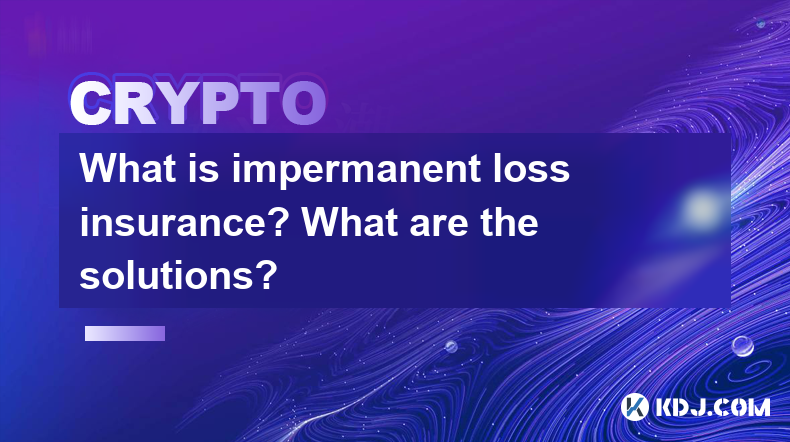
What is Impermanent Loss Insurance? What are the Solutions?
Impermanent loss is a significant concern for liquidity providers in decentralized finance (DeFi) platforms. It occurs when the price of tokens in a liquidity pool changes compared to when they were deposited, leading to a potential loss if the provider decides to withdraw their liquidity. To mitigate this risk, impermanent loss insurance has emerged as a solution. This article explores what impermanent loss insurance is and the various solutions available to address this issue.
Understanding Impermanent Loss
Before delving into impermanent loss insurance, it's crucial to understand what impermanent loss is. Impermanent loss happens when the value of tokens in a liquidity pool diverges from the value they would have if they were held outside the pool. This divergence can lead to a situation where the liquidity provider might have been better off holding the tokens rather than providing liquidity. The term "impermanent" suggests that the loss could be reversed if the prices return to their original state before the liquidity is withdrawn.
The Role of Impermanent Loss Insurance
Impermanent loss insurance is a financial product designed to protect liquidity providers from the potential losses they might incur due to price volatility. This insurance works by compensating providers for the difference between the value of their tokens in the pool and what they would have been worth if held outside the pool. By offering this protection, insurance providers aim to encourage more users to participate in liquidity provision, thereby enhancing the liquidity and stability of DeFi platforms.
Types of Impermanent Loss Insurance Solutions
There are several approaches to providing impermanent loss insurance, each with its own set of mechanisms and benefits. Here are some of the prominent solutions:
1. Insurance Pools
Insurance pools are one of the most common solutions for impermanent loss insurance. These pools are funded by premiums paid by liquidity providers, and they are used to compensate providers who experience impermanent loss. The operation of an insurance pool typically involves the following steps:
- Joining the Pool: Liquidity providers can opt to join an insurance pool by paying a premium, which is usually a percentage of their liquidity provision.
- Claiming Compensation: If a provider experiences impermanent loss, they can submit a claim to the insurance pool. The pool then assesses the claim and, if valid, compensates the provider for their loss.
- Pool Management: The insurance pool is managed by a decentralized autonomous organization (DAO) or a smart contract, ensuring transparency and fairness in the distribution of funds.
2. Smart Contract-Based Solutions
Smart contract-based solutions leverage the power of blockchain technology to automatically manage and distribute impermanent loss insurance. These solutions are designed to be more efficient and less prone to human error. The process typically involves:
- Setting Up the Contract: A smart contract is deployed on the blockchain, defining the terms of the insurance, including the premium rates and the conditions for compensation.
- Automatic Premium Collection: When liquidity providers deposit their tokens into the pool, the smart contract automatically collects the insurance premium.
- Automatic Compensation: If the conditions for impermanent loss are met, the smart contract automatically calculates and disburses the compensation to the affected providers.
3. Decentralized Insurance Protocols
Decentralized insurance protocols are another innovative solution to impermanent loss. These protocols operate on decentralized networks and are governed by community consensus. The key features of these protocols include:
- Community Governance: The terms and conditions of the insurance are set and adjusted by the community through voting mechanisms.
- Transparency and Security: All transactions and claims are recorded on the blockchain, ensuring transparency and security.
- Flexibility: These protocols often allow for customization of insurance terms to suit the needs of different liquidity providers.
How to Choose the Right Impermanent Loss Insurance Solution
Choosing the right impermanent loss insurance solution depends on several factors, including the level of risk tolerance, the size of the liquidity provision, and the specific DeFi platform being used. Here are some considerations to keep in mind:
- Premium Costs: Evaluate the cost of the insurance premium and compare it with the potential benefits. Higher premiums might offer more comprehensive coverage but could also reduce overall returns.
- Coverage Limits: Check the maximum amount of coverage provided by the insurance solution. Ensure that it aligns with the potential impermanent loss you might face.
- Reputation and Reliability: Research the reputation and track record of the insurance provider. Look for reviews and feedback from other liquidity providers to gauge the reliability of the solution.
- Ease of Use: Consider the user-friendliness of the insurance solution. Solutions that are easy to understand and use can save time and reduce the likelihood of errors.
Implementing Impermanent Loss Insurance: A Step-by-Step Guide
To implement impermanent loss insurance, follow these detailed steps:
- Research Available Options: Start by researching the different impermanent loss insurance solutions available on the market. Look for solutions that are compatible with the DeFi platform you are using.
- Evaluate the Terms: Carefully read and understand the terms and conditions of the insurance solution. Pay attention to the premium rates, coverage limits, and any exclusions or limitations.
- Join the Insurance Pool: If you decide to go with an insurance pool, follow the platform's instructions to join the pool. This usually involves paying the required premium.
- Navigate to the Insurance Section: On the DeFi platform, find the section dedicated to impermanent loss insurance.
- Select the Pool: Choose the insurance pool that best fits your needs.
- Pay the Premium: Enter the amount of liquidity you want to insure and pay the corresponding premium.
- Set Up Smart Contract-Based Insurance: If you opt for a smart contract-based solution, you will need to interact with the smart contract directly.
- Connect Your Wallet: Connect your cryptocurrency wallet to the DeFi platform.
- Deploy the Contract: Follow the platform's instructions to deploy the smart contract, which will automatically manage your insurance.
- Deposit Liquidity: Deposit your tokens into the liquidity pool, and the smart contract will collect the premium.
- Monitor and Claim: Regularly monitor the performance of your liquidity provision and the insurance coverage. If you experience impermanent loss, follow the platform's process to submit a claim and receive compensation.
Frequently Asked Questions
Q: Can impermanent loss insurance cover all types of losses in DeFi?
A: Impermanent loss insurance is specifically designed to cover losses related to price volatility in liquidity pools. It does not cover other types of losses, such as those due to smart contract failures or hacks.
Q: Is impermanent loss insurance mandatory for liquidity providers?
A: No, impermanent loss insurance is not mandatory. It is an optional service that liquidity providers can choose to purchase to mitigate their risk.
Q: How does the cost of impermanent loss insurance affect my overall returns?
A: The cost of impermanent loss insurance, typically in the form of a premium, will reduce your overall returns. However, it can also protect you from significant losses, potentially leading to a net positive outcome in volatile market conditions.
Q: Are there any regulatory considerations for impermanent loss insurance?
A: Regulatory considerations for impermanent loss insurance can vary by jurisdiction. It's important to check the legal status of such insurance products in your region and ensure compliance with any applicable regulations.
Disclaimer:info@kdj.com
The information provided is not trading advice. kdj.com does not assume any responsibility for any investments made based on the information provided in this article. Cryptocurrencies are highly volatile and it is highly recommended that you invest with caution after thorough research!
If you believe that the content used on this website infringes your copyright, please contact us immediately (info@kdj.com) and we will delete it promptly.
- Seventy Chains and Counting: Bitcoin Staking Expands With Mainnet Launch and New Integration
- 2025-04-13 12:10:15
- Remittix (RTX) Price Prediction Shows Hopes That DOGE Price May Yet Recover
- 2025-04-13 12:10:15
- WOODZ Rumored to Have Dated the Late Actress Kim Sae Ron Prior to Her DUI Incident
- 2025-04-13 12:10:13
- The SafeMoon (SFM) project has gradually signaled bullish momentum
- 2025-04-13 12:10:13
- ArbitrageScanner – The Loudest Crypto Event of the Year
- 2025-04-13 12:00:12
- Four-day Spiritual Retreat at St Lawrence Church and Shrine Concludes
- 2025-04-13 12:00:12
Related knowledge

What is impermanent loss insurance? What are the solutions?
Apr 12,2025 at 01:14am
What is Impermanent Loss Insurance? What are the Solutions? Impermanent loss is a significant concern for liquidity providers in decentralized finance (DeFi) platforms. It occurs when the price of tokens in a liquidity pool changes compared to when they were deposited, leading to a potential loss if the provider decides to withdraw their liquidity. To m...
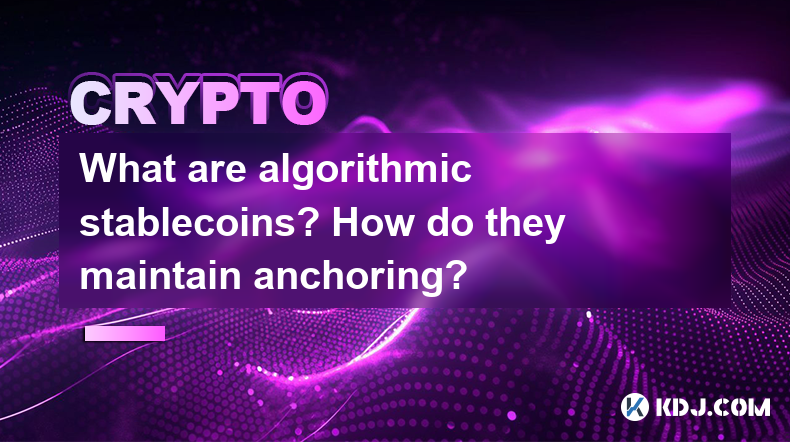
What are algorithmic stablecoins? How do they maintain anchoring?
Apr 12,2025 at 11:35am
Algorithmic stablecoins represent a fascinating and innovative segment within the cryptocurrency ecosystem. These digital assets are designed to maintain a stable value, typically pegged to a fiat currency like the US dollar, through the use of algorithms rather than traditional collateral. This approach distinguishes them from other types of stablecoin...
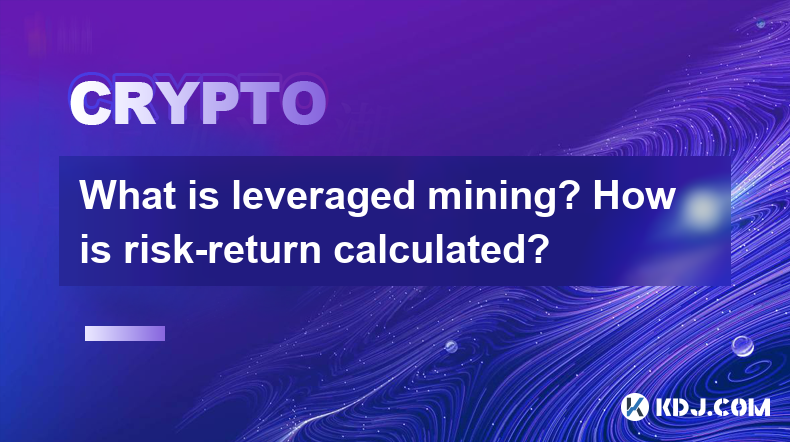
What is leveraged mining? How is risk-return calculated?
Apr 11,2025 at 04:07pm
What is Leveraged Mining? How is Risk-Return Calculated? Leveraged mining is a strategy used in the cryptocurrency space where miners borrow funds to increase their mining capacity and potential returns. This approach can amplify both profits and losses, making it a high-risk, high-reward endeavor. Understanding how to calculate the risk and return asso...
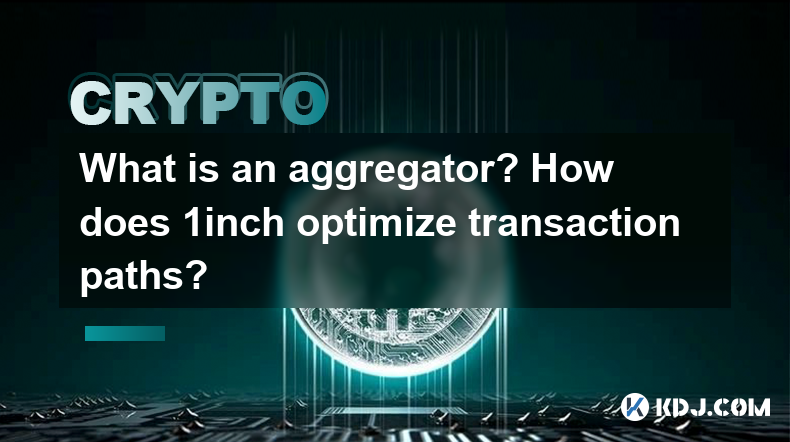
What is an aggregator? How does 1inch optimize transaction paths?
Apr 12,2025 at 05:00pm
An aggregator in the cryptocurrency space is a tool that compiles and compares data from multiple decentralized exchanges (DEXs) to find the best possible trading routes and prices for users. Aggregators are essential for traders looking to optimize their transactions, as they can automatically search through various liquidity sources to ensure the most...
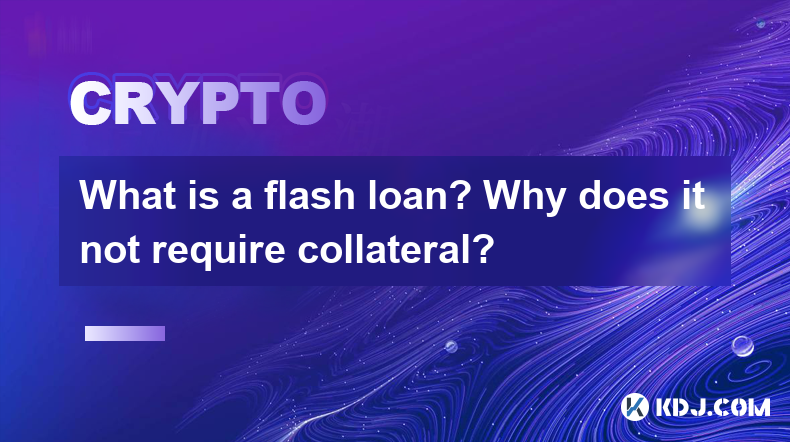
What is a flash loan? Why does it not require collateral?
Apr 11,2025 at 12:57pm
A flash loan is a type of loan that is unique to the decentralized finance (DeFi) ecosystem. It allows borrowers to take out a loan without the need for collateral, and the loan must be repaid within the same transaction. This type of loan is facilitated by smart contracts on blockchain platforms, most commonly on the Ethereum network. The concept of a ...
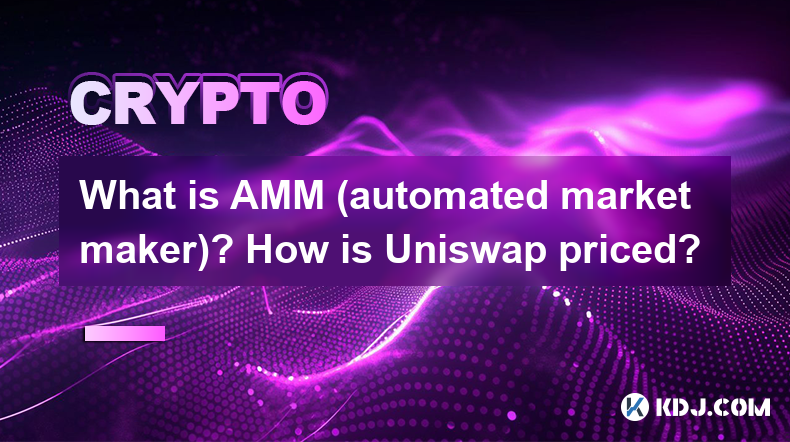
What is AMM (automated market maker)? How is Uniswap priced?
Apr 11,2025 at 06:57pm
What is AMM (Automated Market Maker)? How is Uniswap Priced? Automated Market Makers (AMMs) are a type of decentralized exchange protocol that use algorithms to price assets instead of traditional order books. The most well-known AMM is Uniswap, which has become a cornerstone of the decentralized finance (DeFi) ecosystem. This article will delve into th...

What is impermanent loss insurance? What are the solutions?
Apr 12,2025 at 01:14am
What is Impermanent Loss Insurance? What are the Solutions? Impermanent loss is a significant concern for liquidity providers in decentralized finance (DeFi) platforms. It occurs when the price of tokens in a liquidity pool changes compared to when they were deposited, leading to a potential loss if the provider decides to withdraw their liquidity. To m...

What are algorithmic stablecoins? How do they maintain anchoring?
Apr 12,2025 at 11:35am
Algorithmic stablecoins represent a fascinating and innovative segment within the cryptocurrency ecosystem. These digital assets are designed to maintain a stable value, typically pegged to a fiat currency like the US dollar, through the use of algorithms rather than traditional collateral. This approach distinguishes them from other types of stablecoin...

What is leveraged mining? How is risk-return calculated?
Apr 11,2025 at 04:07pm
What is Leveraged Mining? How is Risk-Return Calculated? Leveraged mining is a strategy used in the cryptocurrency space where miners borrow funds to increase their mining capacity and potential returns. This approach can amplify both profits and losses, making it a high-risk, high-reward endeavor. Understanding how to calculate the risk and return asso...

What is an aggregator? How does 1inch optimize transaction paths?
Apr 12,2025 at 05:00pm
An aggregator in the cryptocurrency space is a tool that compiles and compares data from multiple decentralized exchanges (DEXs) to find the best possible trading routes and prices for users. Aggregators are essential for traders looking to optimize their transactions, as they can automatically search through various liquidity sources to ensure the most...

What is a flash loan? Why does it not require collateral?
Apr 11,2025 at 12:57pm
A flash loan is a type of loan that is unique to the decentralized finance (DeFi) ecosystem. It allows borrowers to take out a loan without the need for collateral, and the loan must be repaid within the same transaction. This type of loan is facilitated by smart contracts on blockchain platforms, most commonly on the Ethereum network. The concept of a ...

What is AMM (automated market maker)? How is Uniswap priced?
Apr 11,2025 at 06:57pm
What is AMM (Automated Market Maker)? How is Uniswap Priced? Automated Market Makers (AMMs) are a type of decentralized exchange protocol that use algorithms to price assets instead of traditional order books. The most well-known AMM is Uniswap, which has become a cornerstone of the decentralized finance (DeFi) ecosystem. This article will delve into th...
See all articles























































































